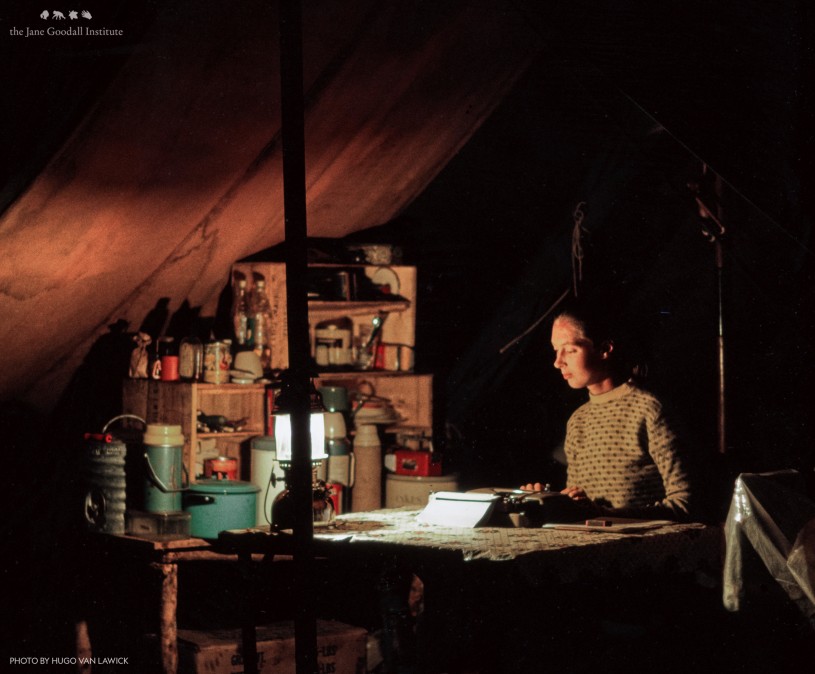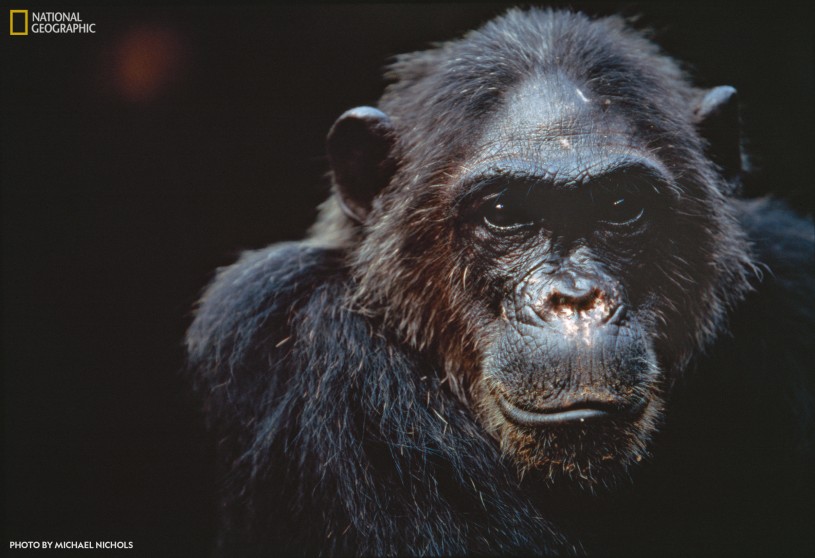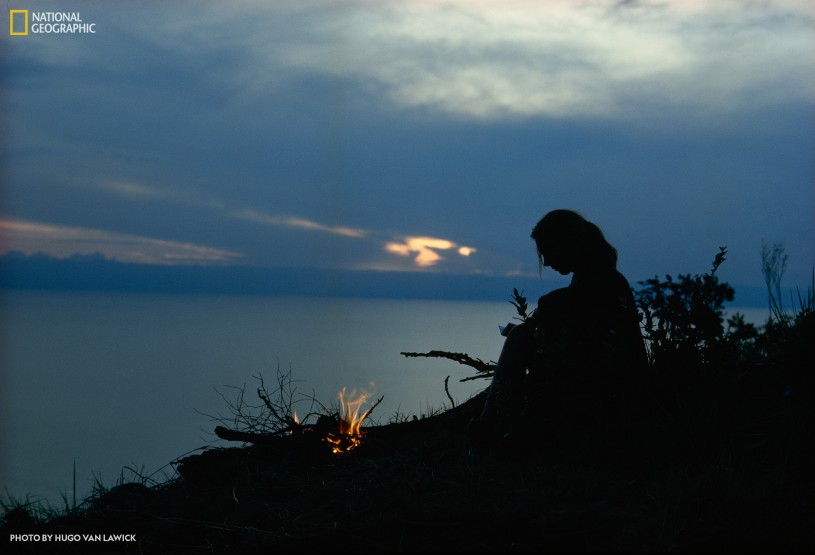The museum will be closed Thursday, December 25 for the Christmas holiday. We will reopen Friday, December 26.
The Evolution of Dr. Jane Goodall
She opened doors for women in science and her discoveries reshaped our understanding of chimpanzees and what it means to be human.

Above photo by Vanne Goodall, National Geographic
Jane Goodall and Hugo van Lawick observe a family of chimpanzees. Learn more about Jane Goodall’s groundbreaking behavioral research at “Becoming Jane: The Evolution of Dr. Jane Goodall,” an exhibition organized by National Geographic and the Jane Goodall Institute.
In 1960, Jane Goodall found herself in the open hills and dense forest of Tanzania’s Gombe Stream National Park, studying chimpanzees. She was just 26 years old at the time, and her discoveries would make her a legend by the time she turned 27.

The seeds of discovery were planted in her childhood, blossoming into a deep love of animals and fascination with Africa. In her twenties, an invitation from a childhood friend brought her to Kenya and into the employ of renowned paleoanthropologist Dr. Louis Leakey. Leaky saw in Goodall the grit and patience needed for fieldwork and selected her to study chimpanzees—our closest living relatives—as part of his research into early human behavior. So it was that Goodall began observing wild chimpanzees in Gombe, accompanied by her mother as a chaperone. Dr. Leaky had secured just six months of funding from the National Geographic Society.

Armed with just a pen or pencil, binoculars, a notebook, and a whistle in case she got into trouble, Goodall went on to make discoveries that shook our understanding of chimpanzees. Her methods were unorthodox—naming chimpanzees and noting their personalities where a university-educated researcher would’ve assigned them numbers—but they paid off.

What had begun as a six-month expedition turned into a 26-year-long career documenting chimpanzees in the wild. Over the course of her research, Goodall turned our understanding of chimpanzees upside down, observing everything from the way chimpanzees built nightly nests, to the fact that they hunted and ate meat. She detailed chimpanzee behavior, like tool use and war-making, that challenged long-held ideas of the natural world and our place in it.
In 1986, 25 years of Goodall's research culminated with the publication of The Chimpanzees of Gombe: Patterns of Behavior, and a subsequent chimpanzee research conference held in celebration of this milestone revealed that chimpanzees were on the verge of extinction. Goodall resolved to protect chimpanzees but quickly realized that all species faced similar threats.

She transitioned into conservation and activism. Her decades-long association with National Geographic and numerous magazine articles, books, television specials, documentary films, all made Goodall a uniquely powerful voice for animals and our planet. She founded the Jane Goodall Institute to promote the understanding and protection of great apes, building on her decades of work. Realizing Earth's future rests in the hands of the next generation, she began the Roots and Shoots initiative to empower young people.

Goodall continues to work tirelessly in defense of our great ape cousins and the planet we all share. While her monumental impact on primatology and conservation only continues to grow, her career began simply with a passion for animals and a determination to live her dreams. It's a story of personal evolution and inspiration, epitomized by a quote from her 2003 book With Love : "Every individual matters. Every individual has a role to play. Every individual makes a difference."
NHM invites you to cultivate inspiration and explore the making of an icon with Becoming Jane: The Evolution of Dr. Jane Goodall, a state-of-the-art exhibition on view at NHM from November 7, 2021 through April 17, 2022.

Becoming Jane: The Evolution of Dr. Jane Goodall is organized and traveled by the National Geographic Society in partnership with the Jane Goodall Institute.
